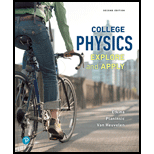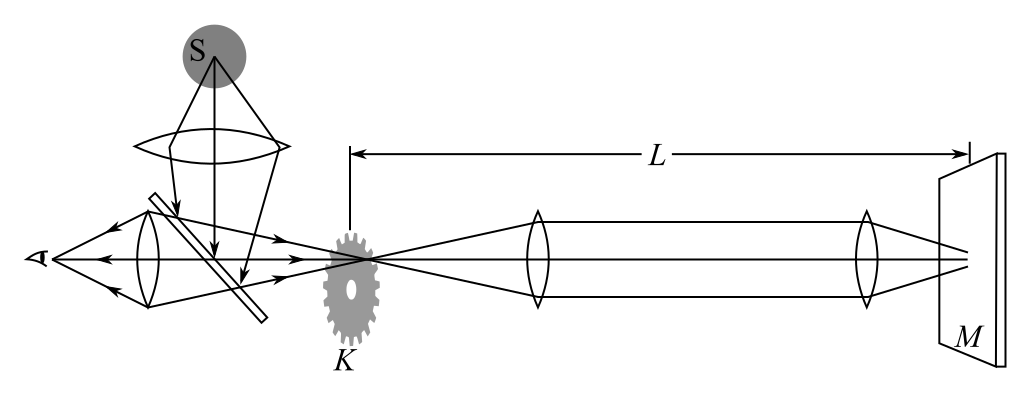
Concept explainers
The explanation for deriving the equation,

Want to see the full answer?
Check out a sample textbook solution
Chapter 25 Solutions
College Physics
- Unreasonable Results Light traveling from water to a gemstone strikes the surface at an angle of 80.0° and has an angle of refraction of 15.2°. (a) What is the speed at light in the gemstone? (b) What is unreasonable about this result? (c) Which assumptions are unreasonable or inconsistent?arrow_forwardPierre de Fermat (16011665) showed that whenever light travels from one point to another, its actual path is the path that requires the smallest time interval. This statement is known as Fermats principle. The simplest example is for light propagating in a homogeneous medium. It moves in a straight line because a straight line is the shortest distance between two points. Derive Snells law of refraction from Fermats principle. Proceed as follows. In Figure P34.54, a light ray travels from point P in medium 1 to point Q in medium 2. The two points are, respectively, at perpendicular distances a and b from the interface. The displacement from P to Q has the component d parallel to the interface, and we let x represent the coordinate of the point where the ray enters the second medium. Let t = 0 be the instant the light starts from P. (a) Show that the time at which the light arrives at Q is t=r1v1+r2v2=n1a2+x2c+n2b2+(dx)2c (b) To obtain the value of x for which t has its minimum value, differentiate t with respect to x and set the derivative equal to zero. Show that the result implies n1xa2+x2=n2(dx)b2+(dx)2 (c) Show that this expression in turn gives Snells law. n1sin1=n2sin2 Figure P34.54 Problems 54 and 55.arrow_forwardFrom his measurements, Roemer estimated that it took 22 mm for light to travel a distance equal to the diameter of Earth’s orbit around the Sun. (a) Use this estimate along with the known diameter of Earth’s orbit to obtain a rough value of the speed of light. (b) Light actually takes 16.5 mm to travel this distance. Use this time to calculate the speed of light.arrow_forward
- The Tunguska event. On June 30, 1908, a meteor burned up and exploded in the atmosphere above the Tunguska River valley in Siberia. It knocked down trees over thousands of square kilometers and started a forest fire, but produced no crater and apparently caused no human casualties. A witness sitting on his doorstep outside the zone of falling trees recalled events in the following sequence. He saw a moving light in the sky, brighter than the Sun and descending at a low angle to the horizon. He felt his face become warm. He felt the ground shake. An invisible agent picked him up and immediately dropped him about a meter from where he had been seated. He heard a very loud protracted rumbling. Suggest an explanation for these observations and for the order in which they happened.arrow_forwardThe speed of the Earth in its orbit is 29.8 km/s. If that is the magnitude of the velocity v of the ether wind in Figure P39.3, find the angle between the velocity of light c in vacuum and the resultant velocity of light if there were an ether.arrow_forwardLunar astronauts placed a reflector on the Moon’s surface, off which a laser beam is periodically reflected. The distance to the Moon is calculated from the round-trip time. (a) To what accuracy in meters can the distance to the Moon be determined, If this time can be measured to 0.100 ns? (b) What percent accuracy is this, given the average distance to the Moon is 384,480 kin?arrow_forward
- (a) What is me ratio of the speed of red light to violet light in diamond, based on Table 25.2? (b) What is this ratio in polystyrene? (c) Which is more dispersive?arrow_forwardUnpolarized light in vacuum is incident onto a sheet of glass with index of refraction n. The reflected and refracted rays are perpendicular to each other. Find the angle of incidence. This angle is called Brewsters angle or the polarizing angle. In this situation, the reflected light is linearly polarized, with its electric field restricted to be perpendicular to the plane containing the rays and the normal.arrow_forwardThe movable mirror of a Michelson interferometer is attached to one end of a thin metal rod of length 23.3 mm. The other end of the rod is anchored so it does not move. As the temperature of the rod changes from 15°C to 25 C , a change of 14 fringes is observed. The light source is a He Ne laser, =632.8 nm . What is the change in length of the metal bar, and what is its thermal expansion coefficient?arrow_forward
- Figure 25.49 shows a light bulb between two mirrors. One minor produces a beam at light with parallel lays; the other keeps light from escaping without being put into the beam. Where is the filament of the light in relation to the focal point or radius of curvature of each mirror? Figure 25.49 The two mirrors trap most of the bulb’s light and form a directional beam as in a headlight.arrow_forwardA light ray travels from vacuum into a slab of material with index of refraction n1 at incident angle θ with respect to the surface. It subsequently passes into a second slab of material with index of refraction n2 before passing back into vacuum again. The surfaces of the different materials are all parallel to one another. As the light exits the second slab, what can be said of the final angle ϕ that the outgoing light makes with the normal? (a) ϕ > θ (b) ϕ < θ (c) ϕ = θ (d) The angle depends on the magnitudes of n1 and n2. (e) The angle depends on the wavelength of the light.arrow_forwardIn Figure P37.52, suppose the transmission axes of the left and right polarizing disks are perpendicular to each other. Also, let the center disk be rotated on the common axis with an angular speed . Show that if unpolarized light is incident on the left disk with an intensity Imax, the intensity of the beam emerging from the right disk is I=116Imax(1cos4t) This result means that the intensity of the emerging beam is modulated at a rate four times the rate of rotation of the center disk. Suggestion: Use the trigonometric identities cos2=12(1+cos2) and sin2=12(1cos2). Figure P37.52arrow_forward
 Physics for Scientists and Engineers: Foundations...PhysicsISBN:9781133939146Author:Katz, Debora M.Publisher:Cengage Learning
Physics for Scientists and Engineers: Foundations...PhysicsISBN:9781133939146Author:Katz, Debora M.Publisher:Cengage Learning Physics for Scientists and EngineersPhysicsISBN:9781337553278Author:Raymond A. Serway, John W. JewettPublisher:Cengage Learning
Physics for Scientists and EngineersPhysicsISBN:9781337553278Author:Raymond A. Serway, John W. JewettPublisher:Cengage Learning Physics for Scientists and Engineers with Modern ...PhysicsISBN:9781337553292Author:Raymond A. Serway, John W. JewettPublisher:Cengage Learning
Physics for Scientists and Engineers with Modern ...PhysicsISBN:9781337553292Author:Raymond A. Serway, John W. JewettPublisher:Cengage Learning College PhysicsPhysicsISBN:9781285737027Author:Raymond A. Serway, Chris VuillePublisher:Cengage Learning
College PhysicsPhysicsISBN:9781285737027Author:Raymond A. Serway, Chris VuillePublisher:Cengage Learning Physics for Scientists and Engineers, Technology ...PhysicsISBN:9781305116399Author:Raymond A. Serway, John W. JewettPublisher:Cengage Learning
Physics for Scientists and Engineers, Technology ...PhysicsISBN:9781305116399Author:Raymond A. Serway, John W. JewettPublisher:Cengage Learning Principles of Physics: A Calculus-Based TextPhysicsISBN:9781133104261Author:Raymond A. Serway, John W. JewettPublisher:Cengage Learning
Principles of Physics: A Calculus-Based TextPhysicsISBN:9781133104261Author:Raymond A. Serway, John W. JewettPublisher:Cengage Learning





